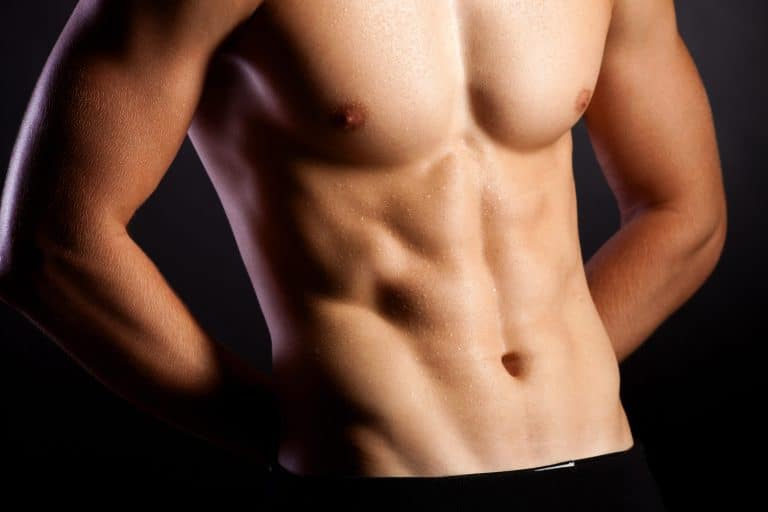Liposuction: What Body Parts?
Introduction
Welcome to new york liposuction center, the premier destination for liposuction in the Northeast. Our two locations, one in Manhattan and one on Long Island, offer a wide range of treatments and procedures to help you achieve your desired look. Our team of board-certified plastic surgeons, led by Dr. Arnold Breitbart, are committed to providing you with the highest quality care.
Liposuction is a surgical procedure used to remove excess fat from specific areas of the body. It can be used to sculpt and contour the body, resulting in a more attractive appearance. In this blog post we will discuss what areas of the body are commonly treated with liposuction, as well as the risks and benefits associated with the procedure. We will also discuss who is an ideal candidate for liposuction and what to expect from the procedure.
Common Body Parts for Liposuction
Liposuction is a surgical procedure used to remove excess fat from various parts of the body. It is a popular cosmetic surgery procedure that can help people achieve their desired body shape and size. The most common areas where liposuction can be performed are the abdomen, hips and buttocks, thighs, arms, neck and chin, back, calves and ankles, and the male chest.
Abdomen
The abdomen is one of the most common areas where liposuction is performed. This procedure can help people get rid of excess fat in their midsection, resulting in a more toned and sculpted look. Liposuction can also be used to treat stubborn fat deposits that are resistant to diet and exercise. During the procedure, a surgeon will make small incisions in the skin and insert a thin tube called a cannula to suction out the unwanted fat cells.
Hips and Buttocks
Liposuction can also be used to contour the hips and buttocks area. This procedure is often used to remove stubborn fat deposits in this area that are resistant to diet and exercise. During the procedure, a surgeon will make small incisions in the skin and insert a thin tube called a cannula to suction out the unwanted fat cells. It can also be used to contour the hips for a more toned look.
Thighs
Liposuction can also be used to contour the thighs for a more toned look. This procedure is often used to remove stubborn fat deposits in this area that are resistant to diet and exercise. During the procedure, a surgeon will make small incisions in the skin and insert a thin tube called a cannula to suction out the unwanted fat cells. It can also be used to contour the thighs for a more toned look.
Arms
Liposuction can also be used to contour the arms for a more toned look. This procedure is often used to remove stubborn fat deposits in this area that are resistant to diet and exercise. During the procedure, a surgeon will make small incisions in the skin and insert a thin tube called a cannula to suction out the unwanted fat cells. It can also be used to contour the arms for a more toned look by removing excess fat from this area of the body.
Neck and Chin
Liposuction can also be used on the neck and chin area for those who have excess fat or sagging skin in these areas of their face or neckline. During this procedure, small incisions are made in these areas of your face or neckline and then excess fat is removed with either manual or powered liposuction techniques such as tumescent liposuction or laser-assisted lipolysis (Smartlipo). This procedure can help give you smoother facial features by removing excess fat from your chin or neck area, resulting in an improved overall appearance of your face or neckline.
Back
Liposuction can also be used on your back area if you have excess fatty deposits that are located there or if you have sagging skin due to aging or weight loss/gain issues. During this procedure, small incisions are made in your back area and then excess fatty tissue is removed using either manual or powered liposuction techniques such as tumescent liposuction or laser-assisted lipolysis (Smartlipo). This procedure can help give you smoother back features by removing excess fatty tissue from this area of your body, resulting in an improved overall appearance of your back area as well as reducing any discomfort caused by having too much fatty tissue there before surgery was performed on it.
G Calves and Ankles
Liposuction can also be used on your calves and ankles if you have excess fatty deposits that are located there or if you have sagging skin due to aging or weight loss/gain issues. During this procedure, small incisions are made in your calves or ankles areas and then excess fatty tissue is removed using either manual or powered liposuction techniques such as tumescent liposuction or laser-assisted lipolysis (Smartlipo). This procedure can help give you smoother calf/ankle features by removing excess fatty tissue from these areas of your body, resulting in an improved overall appearance of your calves/ankles as well as reducing any discomfort caused by having too much fatty tissue there before surgery was performed on it.
H Male Chest
Liposuction is also commonly used on men’s chests if they have excess fatty deposits that are located there due to gynecomastia (male breast enlargement). During this procedure, small incisions are made around each nipple, then excess fatty tissue is removed using either manual or powered liposuction techniques such as tumescent liposuction or laser-assisted lipolysis (Smartlipo). This procedure helps give men smoother chest features by removing any unwanted fat from their chest, resulting in an improved overall appearance of their chest as well as reducing any discomfort caused by having too much fatty tissue there before surgery was performed on it.
Risks Associated with Liposuction
Liposuction is a surgical procedure that removes fat from the body, typically from areas like the abdomen, hips, and thighs. It can be an effective way to improve body contour and reduce the appearance of stubborn fat deposits that don’t respond to diet and exercise.
However, it is important to understand that liposuction is still a surgical procedure and carries risks. It is important to discuss these risks with your doctor before deciding if liposuction is right for you.
General Risks Associated with Any Surgery
All surgeries carry some risk of infection, bleeding, and reaction to anesthesia. The risk of infection can be minimized by following your doctor’s instructions for wound care after surgery. Bleeding can also occur during or after surgery, and you may need a blood transfusion if you lose too much blood.
Anesthesia carries its own risks, including allergic reactions or breathing problems during the procedure. Your doctor will discuss these potential risks with you before performing the procedure so you can make an informed decision about your care.
Specific Risks Associated with Liposuction
In addition to the general risks associated with any surgery, there are some specific risks associated with liposuction. These include:
- Damage to underlying structures such as nerves, blood vessels, and muscles
- Uneven fat removal or contour irregularities
- Fluid accumulation (seroma)
- Excessive scarring
- Skin discoloration or numbness
- Unfavorable changes in skin texture or skin laxity
- Blood clots in deep veins (deep vein thrombosis)
- Pulmonary embolism
- Heart attack or stroke
- Death
Your doctor will discuss these potential risks with you prior to surgery so that you can make an informed decision about whether or not liposuction is right for you.
Complications That Can Occur After Liposuction Surgery
There are also complications that can occur after liposuction surgery has been completed. These include:
– Infection at the surgical site – Fluid accumulation (seroma) – Excessive scarring – Skin discoloration or numbness – Unfavorable changes in skin texture or skin laxity – Blood clots in deep veins (deep vein thrombosis) – Pulmonary embolism – Heart attack or stroke – Death It is important to follow all of your doctor’s instructions for wound care after surgery in order to minimize the risk of these complications occurring. You should also be aware of any signs of infection such as redness, swelling, fever, or drainage from the incision site and contact your doctor immediately if any of these occur. Long-Term Risks Associated with Liposuction There are also long-term risks associated with liposuction that should be considered before undergoing the procedure. These include: – Uneven fat removal or contour irregularities – Skin laxity due to excessive skin removal – Unfavorable changes in skin texture due to excessive suctioning – Changes in sensation due to nerve damage It is important to discuss these potential long-term risks with your doctor prior to undergoing liposuction so that you can make an informed decision about your care.
Who is an Ideal Candidate for Liposuction?
Liposuction is a cosmetic procedure that can produce dramatic results for those who are looking to reduce fat in certain areas of the body. Before undergoing the procedure, it is important to understand who the ideal candidate for liposuction is.
Age Requirements for the Procedure
The ideal candidate for liposuction should be at least 18 years old, as this is the age when you are considered an adult and can make decisions about your own health and body. However, if you are younger than 18, you may still be able to have the procedure done with parental consent.
Health Considerations for the Procedure
It is important that you be in good overall health before undergoing liposuction. This means that you should have no serious medical conditions such as diabetes, heart disease, or high blood pressure that could put you at risk during surgery or recovery. It’s also important to make sure that your weight is within a healthy range before having liposuction done.
Psychological Considerations for the Procedure
It’s also important to make sure that you are in a good mental state before having liposuction done. This means that you should be in a good place emotionally and psychologically and not be using liposuction as a way to cope with any underlying issues such as depression or anxiety. You should also have realistic expectations about what liposuction can do for your body and understand that it cannot fix all of your physical flaws or give you the perfect body overnight.
In summary, the ideal candidate for liposuction should be at least 18 years old, in good overall health, and have realistic expectations about what the procedure can do for their body. It’s important to make sure that you meet these criteria before undergoing liposuction so that you can get the best results possible from your surgery.
Conclusion
Liposuction is a safe and effective procedure for removing excess fat from different areas of the body. However, it is important to remember that liposuction is not a substitute for diet and exercise and should only be used when those methods have failed. It is also important to discuss any health concerns with your doctor before undergoing liposuction. If you are considering liposuction, the New York Liposuction Center is here to help. Our team of board-certified plastic surgeons at our two locations in New York – 700 Park Avenue, New York, NY, 10021 US and 1155 Northern Boulevard Suite 110, Manhasset, New York, 11030 US – are led by Dr. Arnold Breitbart and specialize in liposuction procedures. Contact us today to learn more about how we can help you reach your desired body shape.




